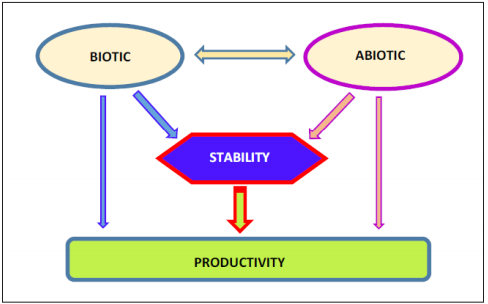- Submissions

Full Text
Cohesive Journal of Microbiology & Infectious Disease
The Relevance of Stability for Outdoor Crops
Leonardo Brantes Bacellar Mendes*
Petrobras Research and Development Center (CENPES), Brazil
*Corresponding author:Leonardo Brantes Bacellar Mendes, Petrobras Research and Development Center (CENPES), Brazil
Submission: July 24, 2019; Published: July 26, 2019

ISSN 2578-0190 Volume3 Issue1
Editorial
Cultures of microorganisms in the laboratory are very important for obtaining experimental results able to provide theories and new scientific models that can generate profound impacts on the human population health and well-being. The development of vaccines and antibiotics very clearly explain the positive consequences of the experimental approach born in the laboratories and later developed as industrial scale up processes – penicillin is still the most used antibiotic on the planet since its discovery by Alexander Fleming in 1928.
Many advances in micro-algal biotechnology are also obtained due to the experimental efforts developed in the laboratory scale where the controlled conditions of the biotic and abiotic parameters can be provided and kept without variability always present in outdoor microalgae production systems designed and used today. When the target of the laboratory strains is a commercial production the scale-up may exceed the factor of 100.000 making the biotic and abiotic invariability hard to achieve affecting crop stability directly.
This impairs the increase in the average yield of crops normally obtained in open ponds. (15 g/m2/day - ash free dry weight). Microalgae growth interruption is common when unexpected fall in temperature or dramatic decrease in light intensity occurs. If these conditions persist the productivity decrease is inevitable. Variability of abiotic parameters as incident light intensity, temperature and salinity of the culture become a function of climate and local meteorology.
Wide variations of the culture medium salinity caused by intense rains still that in a short time interval lead to the loss of stability rising the risk of harmful invasions by zooplankton.
The medium temperature abrupt rise may also occasion crash of microalgae crops with irreversible damage in a short time interval affecting the outdoor production systems. Part of the stability obtained in the scale-up processes is therefore dependent on prior analysis of local climate and weather parameters pointed to receive a future scientific or commercial enterprise.
Biotic factors in some way have more difficult characteristics to prevent due to the constant lack of previous records for a certain location. These factors may undermine the stability of production systems either through cross-contamination of undesired micro-algal species (competitors by light and nutrients) or occurrence of predators (grazers) feeding of microalgae cells and producing the culture crash in a few hours. The influence of various factors (abiotic and biotic) on the stability and its relationship to micro-algal productivity can be observed in Figure 1.
Figure 1:Influence of abiotic and biotic factors on stability and their relationship with productivity.

Productivity
The rise of current productivity on the outdoor microalgae cultivation sites is related to the challenge of achieving significant stability over time. Over the past few years, many R&D efforts have been put in place to raise the micro-algal productivity over the scale-up process. In this context the conception of a scientific strategy for achieving stability may represent the difference between a project with a promising future and a project that is likely to be abandoned soon.
© 2019 Leonardo Brantes Bacellar Mendes. This is an open access article distributed under the terms of the Creative Commons Attribution License , which permits unrestricted use, distribution, and build upon your work non-commercially.
 a Creative Commons Attribution 4.0 International License. Based on a work at www.crimsonpublishers.com.
Best viewed in
a Creative Commons Attribution 4.0 International License. Based on a work at www.crimsonpublishers.com.
Best viewed in 







.jpg)






























 Editorial Board Registrations
Editorial Board Registrations Submit your Article
Submit your Article Refer a Friend
Refer a Friend Advertise With Us
Advertise With Us
.jpg)






.jpg)














.bmp)
.jpg)
.png)
.jpg)










.jpg)






.png)

.png)



.png)






